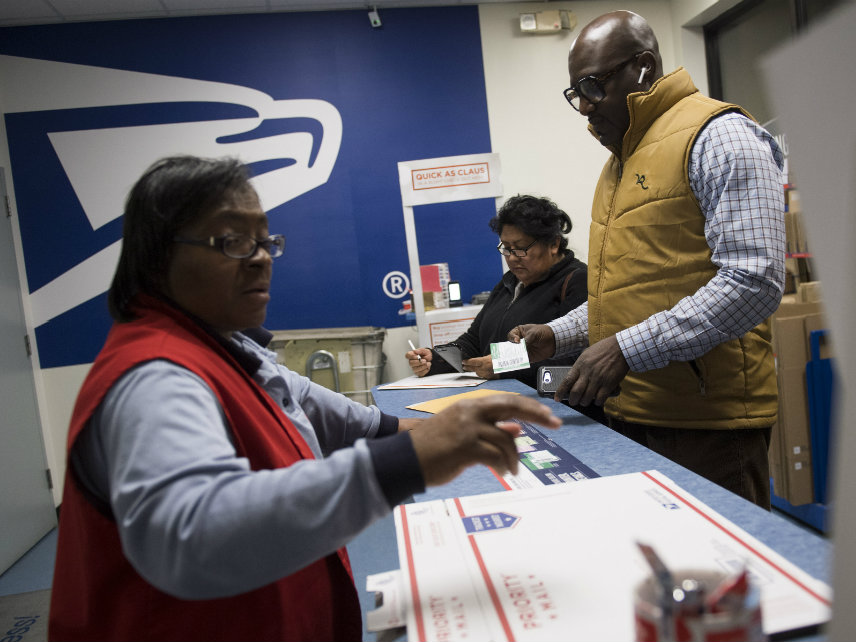Trump's Plan to Privatize the Post Office Deserves a Serious Look
The case for privatization is strong, but there are political hurdles.

Amid a sweeping plan to overhaul the structure of the federal government, the Trump administration is calling for the privatization of the U.S. Postal Service. It's an idea whose time has come.
The USPS is hemorrhaging money, with over $100 billion in unfunded pension liabilities and "no clear path to profitability without reform," according to President Donald Trump's document itself. With the advent of email and related technologies, the first-class mailing services provided by the USPS are being used less and less. The number of first-class letters sent has fallen by more than half since 2005, giving the state-run monopoly dim financial prospects. In the last four years alone, the USPS took a combined loss of $18.9 billion.
The 132-page government reform proposal reveals only limited information about President Donald Trump's intentions regarding the postal service, although it's clear that privatization is his ultimate goal. The plan suggests two possible avenues of market-oriented change: private management with federal regulatory oversight or selling off the postal service in its entirety, either through an initial public offering (IPO) or a direct sale.
The proposal hints that an IPO may prove difficult to achieve given the postal service's current condition, since few investors are likely to be interested in a highly unprofitable, bureaucratic mess. It says a sale would likely require changes and restructuring to first net a profit. Selling the USPS would also mean that the federal government would have to absorb its debt and unfunded liabilities. While these concerns are valid, an IPO is still feasible. Cornell University economist Richard Geddes found that a USPS IPO could raise as much as $40 billion.
Apart from raising money for the government, an IPO would have considerable advantages. Liberalization would grant the USPS greater flexibility in making business decisions, such as determining wages and benefits. Relief from regulatory and political pressure would enable the operation to make changes more rapidly and as necessary, increasing its efficiency.
The case for privatization is strong, but it there are political hurdles. Postal unions are vehemently opposed to losing generous federal benefits and are not stingy with their political contributions. The USPS employs more than half a million people, which means change will have real political consequences.
Opponents of denationalization say the experience of European countries illustrates the drawbacks of free enterprise: higher prices, lower wages, and mass layoffs. But those prospects reflect the economic bubble in which government-run postal services operate.
The USPS currently is free from any real competition (in the provision of first-class mail, at least), and its prices are largely unresponsive to demand, leading to an inefficient allocation of resources. Opening the postal services to more competition would reduce these inefficiencies.
If prices for first-class postal services go up after privatization, that means the USPS was holding prices below market levels. If jobs and wages are cut, that means the USPS was avoiding changes that would have made its operations more efficient.
It's clear that the solution to the postal service's ills is more capitalism. The president seems to understand that. He has signed an executive order establishing a task force to identify "reform consistent with this reorganization proposal." Its report, which will be available by August 10, should outline pragmatic steps toward demonopolizing the postal services.


Show Comments (55)